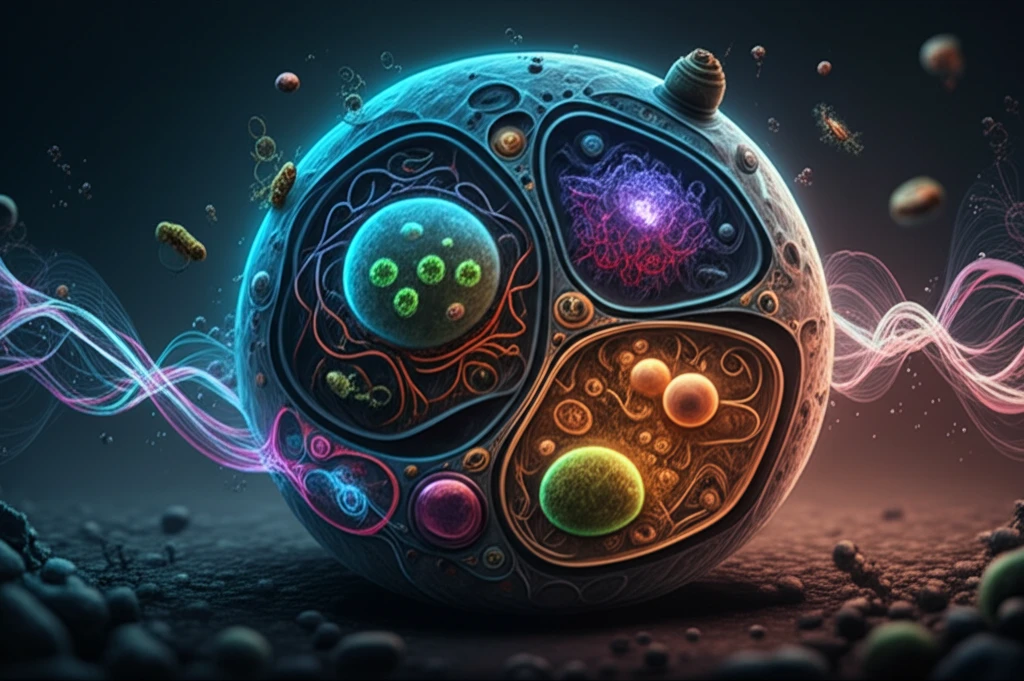
Unveiling the Hidden Impacts: How Radiation Affects Tiny Ecosystems and What It Means for Our Future
"A new study reveals surprising effects of chronic radiation on microbial communities, challenging previous assumptions and highlighting the importance of ecological interactions."
Our planet's ecosystems are intricately connected webs of life, where the fate of one species is often intertwined with the well-being of others. While environmental protection efforts often focus on preserving these ecosystems, there's a critical aspect that often gets overlooked: the impact of radiation. Most research has traditionally focused on individual species, neglecting the complex interactions that define how ecosystems truly function. How does radiation exposure affect the delicate balance of life, especially when exposure is long-term and subtle?
To unravel this mystery, scientists are turning to 'microcosms' – miniature, simplified ecosystems that allow us to study ecological interactions in a controlled laboratory setting. These microcosms, containing essential components like producers, consumers, and decomposers, offer a window into the complex dynamics of nature without the overwhelming complexity of a full-scale environment. One such microcosm, developed by Kawabata et al., consists of three key players: Euglena (a producer), Tetrahymena (a consumer), and E. coli (a decomposer). This simplified system allows researchers to observe and simulate the effects of radiation on species interactions in a manageable way.
Previous research using this microcosm has yielded surprising results. While single-species studies suggested that E. coli is the most radiation-sensitive and Tetrahymena the most resistant, the co-cultured microcosm revealed a different story. In this interconnected system, E. coli was still the first to decline under radiation exposure, but unexpectedly, Tetrahymena, the supposedly resistant species, was next, followed by Euglena. This suggested that the impact of radiation wasn't just about direct sensitivity, but also about the indirect effects of ecological interactions. Now, new research seeks to refine these models, incorporating complexities like predation resistance to create a more accurate picture of how chronic radiation exposure truly reshapes these miniature worlds.
The Unexpected Twist: Chronic Radiation and Microbial Ecosystems

Recent experiments exposing microcosms to chronic gamma radiation (at rates of 1.2Gy/day, 5Gy/day, 10Gy/day, and 23Gy/day) have challenged earlier predictions. The initial models suggested that Tetrahymena, the most radiation-resistant species in isolation, would be the most vulnerable in the long run due to the decline of its food source, E. coli. However, the experimental results painted a different picture: E. coli populations decreased with increasing radiation dose, but Tetrahymena populations remained relatively stable or even slightly increased. This discrepancy indicated that the relationship between Tetrahymena and E. coli was more intricate than a simple predator-prey dynamic.
- The two phenotypes are genetically distinct.
- The resistant phenotype is harder to predate upon.
- The resistant phenotype grows at a lower rate than the normal.
- The normal phenotype rises in number if resistant types are reduced by higher dose rates
Implications and Future Directions
The updated model provides a more nuanced understanding of how chronic radiation shapes microbial ecosystems, emphasizing the importance of considering complex interactions like predation resistance. The model showed the importance of radiation resistant phenotypes in the bacteria for radiation resistance, even if the resistant bacteria grows slower. While the microcosm is a simplification of real-world ecosystems, it offers valuable insights into the potential long-term consequences of radiation exposure. Further research is needed to validate these findings in more complex systems and to explore the genetic mechanisms underlying the development of predation resistance. Individual-based modelling approaches can also be implimented. Ultimately, understanding the ecological effects of radiation is crucial for protecting our environment and ensuring the health of our planet in the face of increasing environmental stressors.
